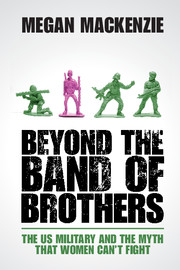Refine search
Actions for selected content:
15418 results in Military history
Contents
-
- Book:
- <i>The Art of Swordsmanship</i> by Hans Lecküchner
- Published by:
- Boydell & Brewer
- Published online:
- 17 May 2022
- Print publication:
- 16 July 2015, pp v-vi
-
- Chapter
- Export citation
German–English Word List
-
- Book:
- <i>The Art of Swordsmanship</i> by Hans Lecküchner
- Published by:
- Boydell & Brewer
- Published online:
- 17 May 2022
- Print publication:
- 16 July 2015, pp 441-443
-
- Chapter
- Export citation
Index
-
- Book:
- Scotland and the French Revolutionary War, 1792–1802
- Published by:
- Edinburgh University Press
- Published online:
- 20 December 2017
- Print publication:
- 07 July 2015, pp 228-234
-
- Chapter
- Export citation
2 - Political Trials
-
- Book:
- Scotland and the French Revolutionary War, 1792–1802
- Published by:
- Edinburgh University Press
- Published online:
- 20 December 2017
- Print publication:
- 07 July 2015, pp 38-69
-
- Chapter
- Export citation
Contents
-
- Book:
- Scotland and the French Revolutionary War, 1792–1802
- Published by:
- Edinburgh University Press
- Published online:
- 20 December 2017
- Print publication:
- 07 July 2015, pp v-v
-
- Chapter
- Export citation
Introduction
-
- Book:
- Scotland and the French Revolutionary War, 1792–1802
- Published by:
- Edinburgh University Press
- Published online:
- 20 December 2017
- Print publication:
- 07 July 2015, pp 1-6
-
- Chapter
- Export citation
Conclusion
-
- Book:
- Scotland and the French Revolutionary War, 1792–1802
- Published by:
- Edinburgh University Press
- Published online:
- 20 December 2017
- Print publication:
- 07 July 2015, pp 207-213
-
- Chapter
- Export citation
List of Tables
-
- Book:
- Scotland and the French Revolutionary War, 1792–1802
- Published by:
- Edinburgh University Press
- Published online:
- 20 December 2017
- Print publication:
- 07 July 2015, pp vi-vi
-
- Chapter
- Export citation
5 - Demonstrations of Loyalty
-
- Book:
- Scotland and the French Revolutionary War, 1792–1802
- Published by:
- Edinburgh University Press
- Published online:
- 20 December 2017
- Print publication:
- 07 July 2015, pp 131-176
-
- Chapter
- Export citation
Bibliography
-
- Book:
- Scotland and the French Revolutionary War, 1792–1802
- Published by:
- Edinburgh University Press
- Published online:
- 20 December 2017
- Print publication:
- 07 July 2015, pp 214-227
-
- Chapter
- Export citation
4 - Financial Contributions
-
- Book:
- Scotland and the French Revolutionary War, 1792–1802
- Published by:
- Edinburgh University Press
- Published online:
- 20 December 2017
- Print publication:
- 07 July 2015, pp 110-130
-
- Chapter
- Export citation
6 - Loyalist Ideology
-
- Book:
- Scotland and the French Revolutionary War, 1792–1802
- Published by:
- Edinburgh University Press
- Published online:
- 20 December 2017
- Print publication:
- 07 July 2015, pp 177-206
-
- Chapter
- Export citation
1 - The Government of Scotland in the 1790s
-
- Book:
- Scotland and the French Revolutionary War, 1792–1802
- Published by:
- Edinburgh University Press
- Published online:
- 20 December 2017
- Print publication:
- 07 July 2015, pp 7-37
-
- Chapter
- Export citation
Frontmatter
-
- Book:
- Scotland and the French Revolutionary War, 1792–1802
- Published by:
- Edinburgh University Press
- Published online:
- 20 December 2017
- Print publication:
- 07 July 2015, pp i-iv
-
- Chapter
- Export citation
3 - Military Recruitment
-
- Book:
- Scotland and the French Revolutionary War, 1792–1802
- Published by:
- Edinburgh University Press
- Published online:
- 20 December 2017
- Print publication:
- 07 July 2015, pp 70-109
-
- Chapter
- Export citation
Acknowledgements
-
- Book:
- Scotland and the French Revolutionary War, 1792–1802
- Published by:
- Edinburgh University Press
- Published online:
- 20 December 2017
- Print publication:
- 07 July 2015, pp vii-viii
-
- Chapter
- Export citation

Yugoslavia in the Shadow of War
- Veterans and the Limits of State Building, 1903–1945
-
- Published online:
- 05 July 2015
- Print publication:
- 25 June 2015

Beyond the Band of Brothers
- The US Military and the Myth that Women Can't Fight
-
- Published online:
- 05 July 2015
- Print publication:
- 17 June 2015
6 - No man’s land
- from Part II - In the shadow of war
-
- Book:
- Yugoslavia in the Shadow of War
- Published online:
- 05 July 2015
- Print publication:
- 25 June 2015, pp 185-210
-
- Chapter
- Export citation
Part II - In the shadow of war
-
- Book:
- Yugoslavia in the Shadow of War
- Published online:
- 05 July 2015
- Print publication:
- 25 June 2015, pp 113-210
-
- Chapter
- Export citation
